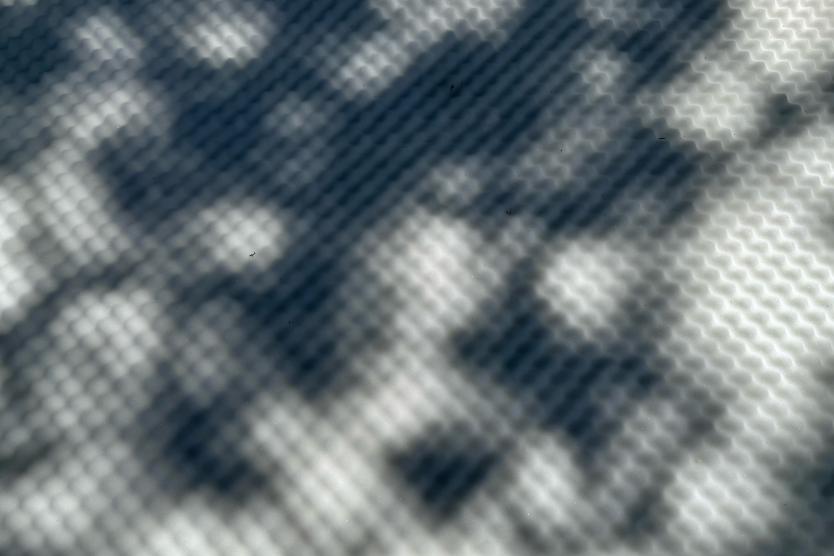
The Symbiotic Approach is a performative research project by Julia Hainz and Carmen Westermeier. Their self-developed artistic method makes site-specific power structures visible and is based on the physiognomic and functional difference through which bodies are read in a society oriented toward normalization.
The performance spuma — scūm — stroma, developed for the CURRENT festival, uses the former health resort "Luftbad" in Degerloch as an atmospherically charged performance site. Drawing on Lynn Margulis’s idea of symbiosis as the basis of all life, the artists create connections between microorganisms, humans, and the environment. The performance invites the audience to sense what is usually invisible—in a collective air bath of breath, foam, and shared space.
1. Your performance is based on Lynn Margulis’s idea of symbiosis as a fundamental principle of life. What does symbiosis mean to you, and how do you translate this biological concept into a performative practice?
In biology, the term symbiosis describes the coexistence of multiple organisms in a way that benefits all parties involved. We have been working together for over ten years, and mutual support has always played a major role in that collaboration. Even during our studies, working as a duo opened up methods and paths we couldn’t—or didn’t want to—take on our own. For example, moving from two-dimensional work into time-based and performative practices, staging ourselves, and understanding our bodies as a medium.
At the beginning, we didn’t explicitly work with the phenomenon of symbiosis; it became a realization over time. Our two bodies exhibit very different characteristics, which—especially in performance, video, and photography—are never perceived without interpretation. We repeatedly faced the challenge of how to prevent our bodies from being constantly compared—whether consciously or unconsciously. Eventually, we decided to take this issue as our starting point and began developing performance scores in which we depend on each other equally.
Throughout the development of our artistic practice, we often returned to biological, medical, or other scientific theories and objects. This approach also led us to the concept of symbiosis and Lynn Margulis’s theory of symbiogenesis. Just like in our work, the theory of symbiogenesis encourages us not to focus on a single symbiotic moment, but rather to tell our story of origin—a zoom out – zoom in – zoom out process.
2. Your performance involves your physical bodies as well as apps, 3D scans, and holograms.
How do you understand the relationship between body and technology, and what role do easily accessible, low-cost or free apps play?
We don’t view technology as something separate from the body—it always influences how we perceive ourselves physically. The ambivalence of this relationship becomes especially apparent with 3D technologies. For example, we use LIDAR, a technology that measures distance with laser beams to create 3D models. Originally developed for terrain mapping in aerospace, LIDAR was quickly adapted for military use as well.
We appropriate this technology and deliberately try to create glitches (errors) by using certain apps in ways other than they were intended. We focus on the overlap between digital space and live-performing bodies to provoke moments of interruption. On the one hand, we extend our bodily limits into the infinite digital space; on the other hand, we simultaneously expose the failure and vulnerability of our live-performing bodies. Working with accessible apps is especially important to us because we want to establish TSA (The Symbiotic Approach) as a method that can spread like an open-source strategy.
3. The “Luftbad” becomes the site of your performance. How does the space influence the performance, and what role does public space play in your artistic practice more broadly?
As artists who almost exclusively work site-specifically, the performance in the Luftbad emerges solely through immediate interaction and negotiation with the physical space. More broadly, the concept of space is a continuous field of exploration in our art and research, and we go far beyond thinking of it merely in physical terms. The first association with space is, of course, often location—but for us, virtual, metaphysical, and social spaces are equally significant. This leads to all kinds of mental gymnastics and creates a constant process of oscillation between form and content.
In our rehearsal and production process, such as in recent days at the Luftbad, we could only imagine the dynamics of the social space during the live performance in July—while we were able to physically experience the location, even that cannot be rehearsed one-to-one. And the space itself will also change on the day of the festival.
Engaging with public space has become increasingly important in our practice over the past few months. For example, we moved part of a performance in Frankfurt to the entrance area of the exhibition space, or we’re developing concepts for performative work beyond enclosed, designated art venues. Looking at the trajectory of our collaboration, this evolution feels like a logical step. We’re definitely looking forward to presenting a new performative-installative work in public space this July at the Luftbad!